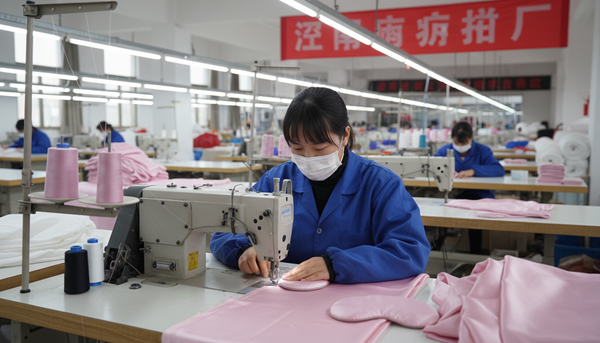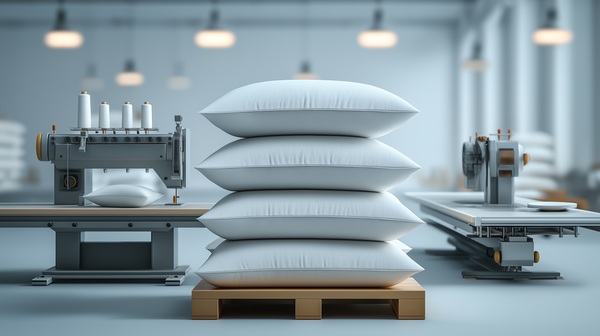From the City to the Candle Countryside

Shijiazhuang and Guangzhou, October 2025
This post is a follow-on from my earlier entry, Jet Lag, Silk and the Rhythm of China, which covered the first leg of my October trip through Jinan. If you haven’t read that yet, click here to catch up.
After wrapping up my time in Jinan, I caught the high-speed train to Shijiazhuang. The system still amazes me. You scan your passport, and that’s it. No tickets, no queues, no stress. Within minutes, I was through security and seated comfortably as the train accelerated through the countryside. The speed, the silence, the sheer efficiency puts most Western systems to shame.
Amy, my ever-enthusiastic factory contact, met me at the station with her colleague Ken. Together, we set off on the drive to the Huaming Candle Factory, about an hour or so outside the city. The further we went, the more the landscape began to breathe. The noise and density of the city gave way to open fields, low industrial parks, and that distinct sense of purposeful order that seems to run through so much of China’s manufacturing heartland.
There were actually two factories at Huaming. One focused on pillar candles, which is their main line of business, and another where they made glass jar candles. That was the one I was visiting. At first glance, it was not spotless. Not in the sterile, automated sense. There was a bit of clutter, a bit of mess. But on reflection, it made perfect sense. Huaming offers low minimum order quantities, which means smaller production runs and far more flexibility for customers. You can’t have that kind of adaptability if everything is done by robots. Fully automated lines are great for mass quantities of tea lights, but not for artisan-style work.
The more I walked through, the more I appreciated the charm in that human touch. There was something wonderful about seeing workers carefully making sure each candle wick sat perfectly in the centre of its jar, or double dipping pillar candles to smooth their surface. These were manual quality checks, but they spoke of pride and craftsmanship. The process almost felt handmade.
The main production line stretched nearly a hundred metres, and the only automated part was the filling of the jars. Everything else was manual. Pouring, trimming, cleaning, inspecting. It surprised me at first, but it made sense. This level of human involvement is what allows them to offer low MOQs and customisation that larger, fully robotic operations simply cannot.
The sample room was another highlight. The sample master was in the middle of creating new blends, including one of mine. Watching the process in person was fascinating. They let me smell the same fragrance blend from different fragrance houses, side by side, so I could choose the exact one that captured our scent profile. It was a detail I hadn’t even considered when we began developing the product, and yet it made all the difference. Only experts in the craft would know to offer that kind of comparison.
We sat down to go through every fragrance properly, and the conversation turned into a collaborative session about identity, tone, and sensory branding. It was immersive and creative, and by the end, I felt confident that they understood not just what we wanted to make, but the feeling we wanted to create.
After the factory tour, Amy and Ken drove me back into the city to visit their head office. The contrast was remarkable. Where the factory had been industrious and hands-on, the head office was pristine and modern. They had recently renovated, and it showed. Bright, polished, organised, and run with quiet precision. They even had a “Welcome Eddie” sign at the entrance, which made me laugh.
There I met Linda, the general manager, who carried herself with calm confidence. The showroom was equally impressive, full of beautiful displays and clever design touches. Walking through it sparked a few new product ideas on the spot. These are the sorts of insights that simply do not happen online. When you are physically there, seeing and touching products, surrounded by people who understand their craft, ideas start to flow naturally. You talk, they respond, they ask questions about your brand, and suddenly you are co-creating the future.
By the end of the day, it felt like much more than a supplier visit. It was the beginning of a partnership built on trust, shared ambition, and a genuine understanding of what we are trying to achieve together.
Amy and Ken dropped me at the airport for my flight to Guangzhou. The journey was smooth and uneventful, a quick hop that gave me time to reflect on how far this trip had already come.
The following day was quiet. The Canton Fair was in its switchover phase, so there were no exhibitions on. It gave me time to reset. I thought about doing something touristy, but the truth was, I was here for a reason. This trip wasn’t a holiday. It was business. And I wanted to make sure I made the most of it.
So I spent the day preparing. Reviewing specifications, making notes, and planning my one full day at the fair. I wasn’t looking for new suppliers or new product lines. With the new pillow factory in place and our product roadmap already mapped for next year, I wanted to use the fair as a place to observe and listen.
Trade fairs are like living ecosystems. You don’t just go to see what’s new; you go to sense what’s changing. Conversations reveal more than catalogues ever can. A few suppliers talked about how US tariffs were pushing them to focus more on Europe and Australia. On the surface, that doesn’t affect me directly, but in practice, it does. It changes their costs, their priorities, and eventually, the prices they quote. Trade is global now. What happens in one market inevitably ripples through another.
When one country sneezes, the rest adjust their margins.
On the fair day itself, I walked for hours. I explored new categories out of curiosity, like personal care and smart health, just to see what innovations were bubbling up. Nothing revolutionary, though I did spot a company making sprays that claim to help you sleep. Worth a little research, perhaps.
The highlight of the day was meeting up with my old supplier, Lily. We had worked together for seven years, and she still runs a great operation. We met briefly at her booth and then later went out for dinner, a friendly catch-up, not a sales pitch. She chose a French restaurant, which sounded lovely in theory. In practice, I don’t recommend French cuisine in China unless a French chef is in charge. The view, however, was spectacular. We were at the top of the Canton Tower, overlooking the entire city, and after dinner, we visited the observation deck.
It was a pleasant evening, a reminder of how valuable old relationships can be. Keeping a warm connection with past suppliers is simply good business. If anything ever happens with capacity or lead times, you know you have a backup who understands your standards and can deliver.
By the end of the day, I had walked what felt like several marathons around the fair. I didn’t find any new verticals to chase, but I left with a head full of ideas, and a deeper understanding of where the market is heading.
Reflections on the Journey
So, was the trip useful? Absolutely.
This visit to China has been one of the most productive and inspiring I’ve had in years. I came here with clear objectives to strengthen supplier relationships, refine product specifications, and ensure our future product lines are in good hands. I am leaving with all of that achieved and more.
We now have product lines planned for at least a year, probably two. The suppliers I’ve met can fulfil those needs with confidence and consistency. But beyond logistics, the real value lies in the relationships. Meeting people face to face changes everything. When you’ve walked their factory floors, shared meals, and spoken about shared goals, future conversations about pricing, terms, and development flow far more naturally.
Some of the detailed specification discussions we had probably saved six months of back-and-forth emails. You can cover far more in person because decisions happen in real time. This trip also allowed me to set the tone, to explain exactly what our brand stands for, what our luxury positioning means, and how we see ourselves in the market. Joe at the silk factory really understood that vision, which is critical for the kind of partnership we are building.
Yes, there will be cost benefits in time, but the real return on this trip is strategic. It is about deepening trust and creating alignment with the people who make our products.
If there is one piece of advice I would offer to anyone running a product-based business, whether online or retail, it is this: go and meet the people who make your products. You will learn more in a day on the ground than in months of emails. Online sourcing can work, and many succeed with it, but it takes longer and lacks the depth of personal connection.
Factories that know you personally see you differently. You stop being another client and become a partner. They go the extra mile, help when timelines tighten, and treat your success as their own.
This trip was a reminder of that truth, and proof that sometimes, the most valuable thing you can do for your business is to get on a plane.



